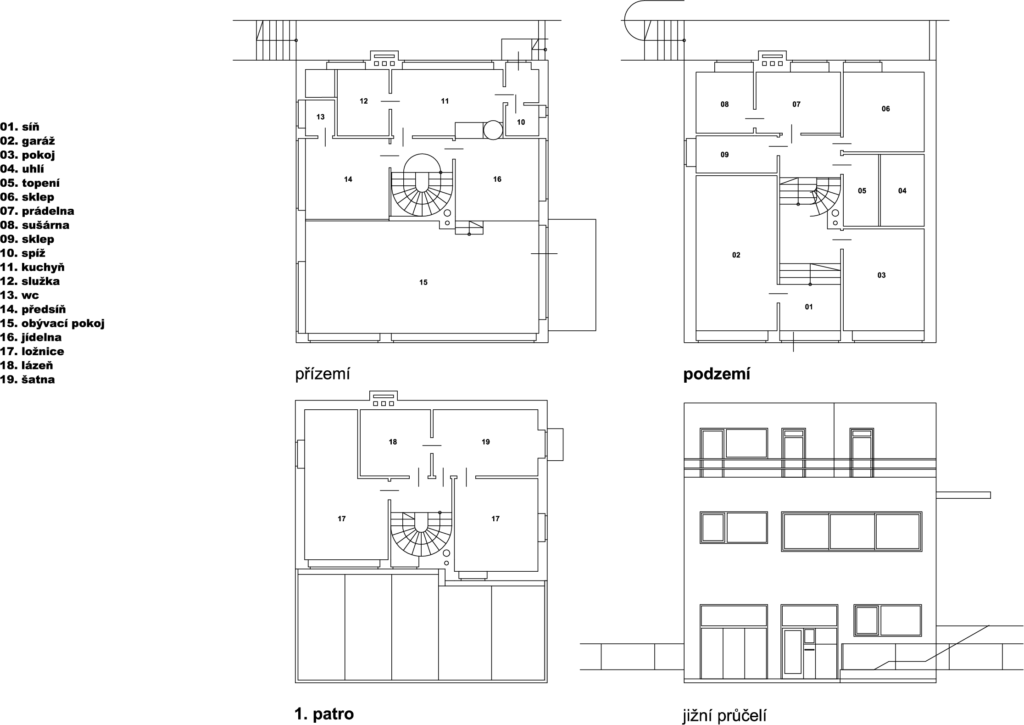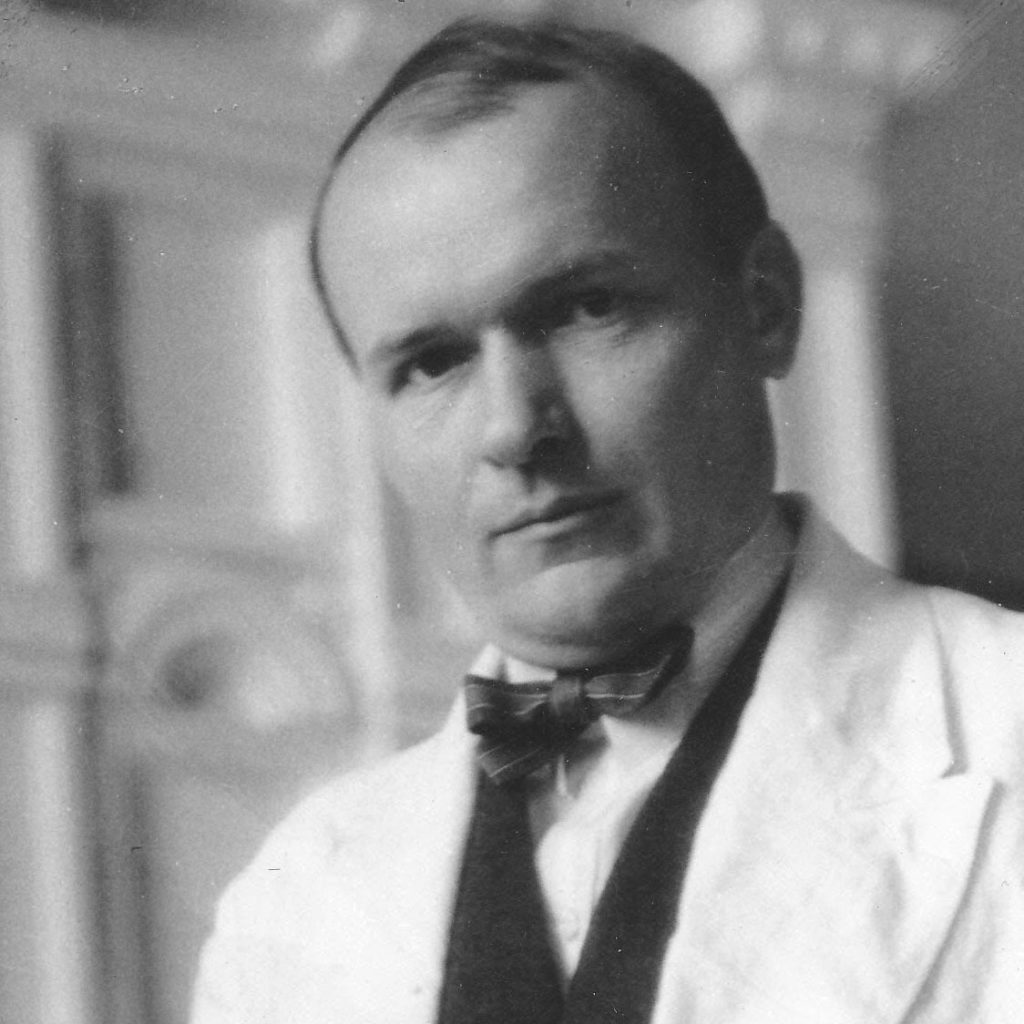
The House of Pavel Janák
In his own villa design, he implemented a perfect terraced cube with a winding staircase in a middle strongly inspired by the spatial plan of the famous architect Adolf Loose. But even with a perfect design and vision, a small error can creep in; the oddity of Janák’s villa was the fact that in the house of the renowned functionalist architect, one could not open one of the windows as a result of the location of the heating pipes. Immediately after her husband’s death, his wife sold the villa in 1956. In the 1970s, the unsuitable construction of a garage took place. The house has recently been renovated.

Architect
Pavel Janák
(*1882 Prague +1956 Prague)

An architect, urban planner, designer of furniture and decorations, professor at the Academy of Arts, Architecture and Design, and architectural theoretician. He studied technical studies in Prague at both the Czech and German schools, as well as at the Academy of Art in Vienna. He worked with Josef Gočár at Jan Kotěra’s studio. His works go through several distinct phases: his first period is consciously focused on modernism, then he becomes the leading representative of Czech cubism. He then goes through a period of national style only to end up being entirely devoted to functionalism. He was a long-standing president of the Czechoslovak Werkbund, the main initiator of the functionalist Baba estate, and the author of Baba’s urban plans. In the Baba estate, he designed the Dovolil House as well as his own house.
1899-1905
studied architecture at CTU in Prague
1902-1903
studied at the German Technical High School in Prague
1906-1907
studied at the Academy of Fine Arts in Vienna with Otto Wagner
1907-1908
cooperated with the studio of Professor Jan Kotěra in Prague, study trips to Italy
1908
member of the Mánes Union of Fine Arts
1909-1910
employed in the Department of Construction of the Prague City Hall
1911
independent architect in Prague
member of the Group of Fine Artists in Prague
1912
co-founder of the Prague Art Workshops (PUD)
1914-1918
military service
1919
state exam at the Czech Technical University in Prague
1921
Professor at the Academy of Arts, Architecture, and Design in Prague
member of the Czech Academy of Sciences and Arts
1924-1945
President of the Czechoslovak Werkbund (SČSD)
1935
corresponding member of the Moscow Academy of Architecture
1936-1956
architect of Prague Castle
Significant Works
1909-1910
Hlávka’s Bridge in Prague
1911
Jakubec house, Jičín
1912-1913
reconstruction of Dr. Fára’s house, Pelhřimov
1913-1914
weir on the River Labe, Předměřice 1
1914
Villa Pick, Ljubljana
1922
crematorium, Pardubice
1922-1924
Riunione adriatica di Sicurta, Prague-Nové Město (with Josef Zasche)
1923-1924
artists’ colony (villas of J. Benda, B. Kafka, E. Filla and V. Beneš), Prague-Ořechovka
1924-1926
Škoda Palace, Prague-Nové Město
Czech Autoclub building, Prague-Nové Město
1924-1928
Libeň Bridge, Prague
1925-1934
reconstruction and extension of the Czernin Palace, Prague-Hradčany
1927
airport, Mariánské Lázně
1927-1928
pavilion of the Academy of Arts, Architecture, and Design at the Brno Exhibition Centre
1927-1929
block of cooperative houses, Prague-Dejvice
1929-1932
building plan of the Baba Housing Estate, Prague-Dejvice
1932
houses of Pavla and Václav Linda and Ing. Karel Dovolil and his own house, Baba, Prague-Dejvice
Juliš Hotel, Prague-Nové Město
Congregation of the Czechoslovak Hussite Church, Prague-Vinohrady
1934-1935
villa with a studio for the sculptor Josef Mařatka, Prague-Střešovice
1948-1950
renovation of the Riding Hall, extension of garages and terraces, Prague Castle
1950
renovation of the Hall of Ball Games, Prague Castle
Owner
Pavel Janák
An important architect, urban planner, member of the State Regulatory Commission, professor at the Academy of Arts, Architecture, and Design in Prague, co-founder of the Artěl Association, main architect of Prague Castle, author of various publications and one of the leading representatives of the Czech Werkbund. Pavel Janák (1882-1956) led the Czechoslovak Werkbund in the second half of the 1920s, when he became the main initiator of the functionalist construction in Baba, as well as the author of its urban study.

